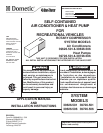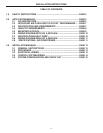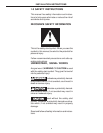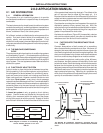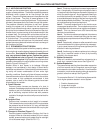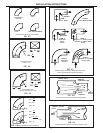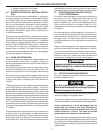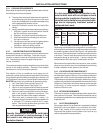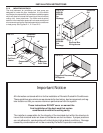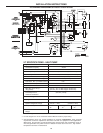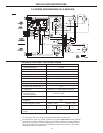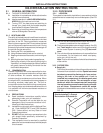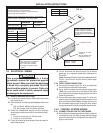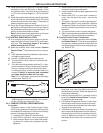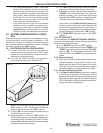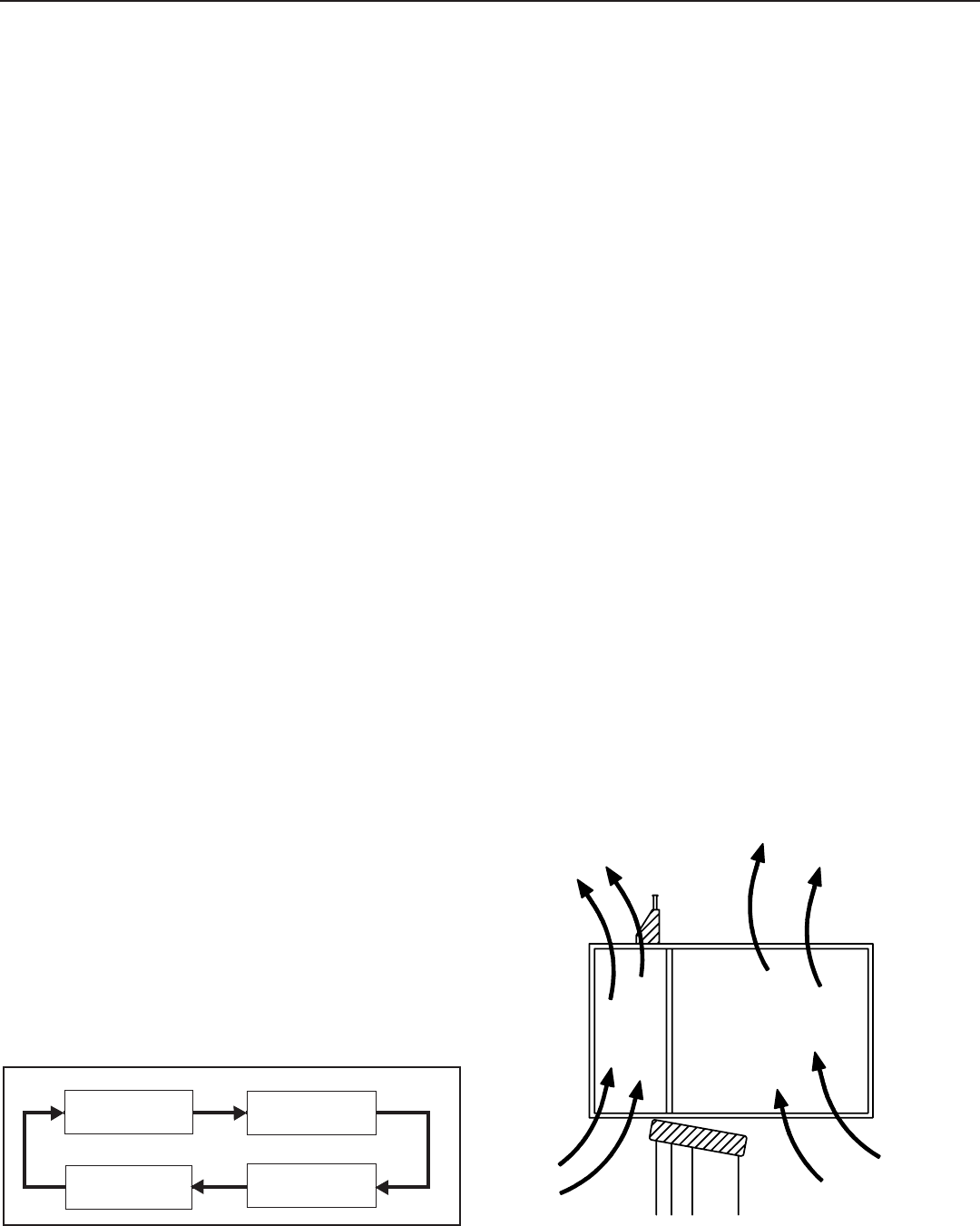
INSTALLATION INSTRUCTIONS
4
2.1 AIR DISTRIBUTION
2.1.1 GENERAL INFORMATION
The purpose of an air conditioning system is to provide
environmental conditions in a space to keep its occupants
comfortable.
The basic elements of a simple forced circulation air system
consists of a cooling unit, a centrifugal blower, a temperature
sensing device controlling operation of the compressor and
blower, suitable air filters, and a duct system.
Air is filtered, cooled, and distributed to various areas of the
vehicle. Duct work should deliver this conditioned air as
directly, quietly, and economically as possible. If the
distribution is not properly sized and balanced, flow of air will
not be as calculated and the system will not function properly
or efficiently.
2.1.2 THE BASIC AIR CONDITIONING
CYCLE
The components which are basic to air conditioning systems
are illustrated by Figure 2.1. Air is treated at the conditioning
unit, transferred to the conditioned space through the supply
duct system and returned to the conditioning unit through the
return system. The duct systems are also referred to as the
distribution system.
2.1.3 FUNCTION OF A DUCT SYSTEM
A duct is a tube, or pipe, that carries air between two points.
Strictly speaking, in air conditioning terms, a duct system is
the arrangement of ducts between air conditioning equip-
ment and rooms to be cooled, not including such items as
filters, cooling coils, etc. However, we shall include in our use
of the term “duct system”, every item in the air-passage
network that offers resistance to air flow. From the standpoint
of the blower it makes no difference whether a resistance is
caused by filters or by the use of a small duct; effect will be
the same. Resistance tends to restrict flow of air through the
entire system.
A forced air system is only as good as its air delivery
system. Comfort levels are affected by the quantity and
velocity of air movement within the space and the proper
mixing of the supply air with the room air. Supply air should
be furnished in a manner that will direct the air to the sources
of the greatest heat loss and/or heat gain. The effects of the
gain or loss can then be offset by the supply air. It is
important that the selection of the diffusers and grills for the
supply and return systems receive careful attention to enable
them to accomplish their purpose.
Consideration must be given to all aspects of the supply air
distribution patterns: throw, spread, drop, etc. Also, the
outlet and return grille velocities must be held within reason-
able limits. Any noise generated at the grille is equal to or
greater in importance than duct noise.
A window air conditioner (Figure 2.2) is essentially a device
with a minimum duct system, since the only items that offer
resistance to air flow are built into the cabinet.
2.1.4 FACTORS AFFECTING RESISTANCE TO AIR
FLOW
Common observations of daily events tell us something
about factors affecting resistance to air flow. We know, for
example, that more pressure is required to force a given rate
of air flow through a small duct than through a large duct. We
also know that streamlining of ducts means less resistance
to air flow, and that sharp angled turns must be avoided.
As air passes through ducts, cooling coils, grilles, diffusers,
and dampers, the static pressure is reduced by friction and
turbulence losses. Good duct design minimizes the need to
balance the duct system by sizing the ducts such that the
designed pressure drop allows the desired airflow rate to be
delivered to each room. An improperly sized duct system will
require extensive balancing. Balancing is a procedure by
which the air flow allotment is adjusted to supply the correct
quantity of conditioned air to each room.
2.0.0 APPLICATION MANUAL
Block diagram of comfort air conditioning cycle.
Arrows indicate direction of air flow.
FIG. 2.1
EVAP
AND
FAN
COMPRESSOR,
CONDENSER
AND FAN
OUTDOORS
WARM ROOM AIR
TO BE COOLED
OUTDOOR AIR TO
CONDENSER
FIG. 2.2
The Window Air Conditioner represents a minimum duct sys-
tem, since air to and from the cooler is handled without external
ducts.
HEATED AIR FROM
CONDENSER DISCHARGED
OUTDOORS
COOL AIR DISCHARGE
INTO ROOM
ROOM
CONDITIONING
UNIT
SUPPLY DUCT
SYSTEM
RETURN DUCT
SYSTEM
CONDITIONED
SPACE



